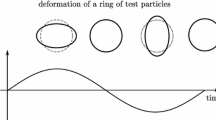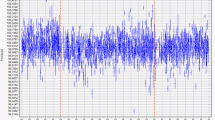Abstract
We present a trend analysis of the ISO-SWS detector performance and a study of the space radiation effects on the SWS detectors. In particular, dark currents, dark current noise and detector responses have been checked as a function of time through the mission and as a function of time in arevolution. The results show that these parameters were stable during the mission in all bandsbut for band 3 (Si:As). Dark currents and responses were found to be higherin the first hours following the start of the science window,especially in band 2 (Si:Ga). We have studied the impacts of cosmic rays and radiation belt particles on the SWS detectors, as well as of the only large solar proton event on November 6, 1997,that occurred during the ISO mission (operated during solar minimum).The observed glitch rates in all SWS bands are found to be between 2 and4 times higher than the value predicted by the CREME96 model for the cosmic ray flux in the period considered. The bands that registered the highest glitch rates showed also a correlation with the electron fluxes measured on theGOES 9 spacecraft. From the distribution of glitchheights (voltage jumps in the detector signal), we have derived the deposited energy distributions of the particles hits. Our results lead to the conclusion that secondaryparticles produced in the shield and the detectors contributed at least as much as cosmic rays to the observed glitch rate. The effects on the detectors of the November 6, 1997 event, which caused that all observationsin a revolution were declared failed, are described in detail.
Similar content being viewed by others
References
Castañ eda, H. and Klaas, U.: ‘space weather impact on the ISOPHOT detectors’, this volume.
Claret, A., Dzitko, H., Engelmann, J. and Starck, J.-L.: ‘Glitch effects in ISOCAM LW detector’, this volume.
de Graauw, Th. et al.: 1996, ‘Observing with the ISO Short-Wavelength Spectrometer’, A&A 315, L49-L54.
Kalma, A. H.: 1980, ‘Nuclear and space radiation effects in infrared detectors’, SPIE Proc. 217, 186-191.
Metcalfe, L. and Kessler, M. F.: 1991, Scientific Capabilities of the ISO Payload, ISO-SSD-8805, issue 1.0.
Moseley, S. H., Silverberg, R. F. and Lakew, B.: 1989, ‘Effects of ionizing radiation on cryogenic infrared detectors’, SPIE Proc. 973, 299-307.
Nieminen, P. and Sø rensen, J.: ‘ISOCAM LW detector glitches: Data and ray-tracing simulations’, this volume.
Patrashin, M. A., Fouks, B. I., Lemke, D. and Wolf, J.: 1995, ‘Radiation-induced effects in extrinsic far-infrared detectors’, SPIE Proc. 2475, 476-486.
Petroff, M.: 1978, ‘Effect of natural radiation environment on the IRAS IR detectors’, IRAS Eng. Lett. Report.
Price, M. C., Griffin, M. J., Church, S. E., Murray, A. G. and Ade, P. A. R.: 1992, ‘Ionising radiationinduced effects in doped germanium FIR photoconductors’, Proceedings of an ESA Symposium on Photon Detectors for Space Instrumentation, 309-312.
Tylka, A. J. et al.: 1997, ‘CREME96: A revision of the cosmic ray effects on micro-electronics code’, IEEE Transactions on Nuclear Science 44, 2150.
Wieprecht, E., Haser, L. and Wiezorrek, E.: ‘SWS-Detector glitch effect correction’, this volume.
Young, E. T., Rieke, G. H., Low, F. J., Haller, E. E. and Beeman, J. W.: 1989, ‘Ga:Ge array development’, Proceedings of the Third Infrared Detector Technology Workshop, 125-133.
Author information
Authors and Affiliations
Rights and permissions
About this article
Cite this article
Heras, A.M., Wieprecht, E., Feuchtgruber, H. et al. The ISO-SWS detectors: Performance trends and space radiation effects. Experimental Astronomy 10, 177–197 (2000). https://doi.org/10.1023/A:1008070706302
Issue Date:
DOI: https://doi.org/10.1023/A:1008070706302




